Trees are one of Overland Park’s most important assets.
Not only do they shade our streets and sidewalks, they filter pollutants from our air, intercept stormwater runoff reducing erosion, cool the air and store carbon. Trees provide a feeling of community, slow traffic when planted near streets, and increase property values.
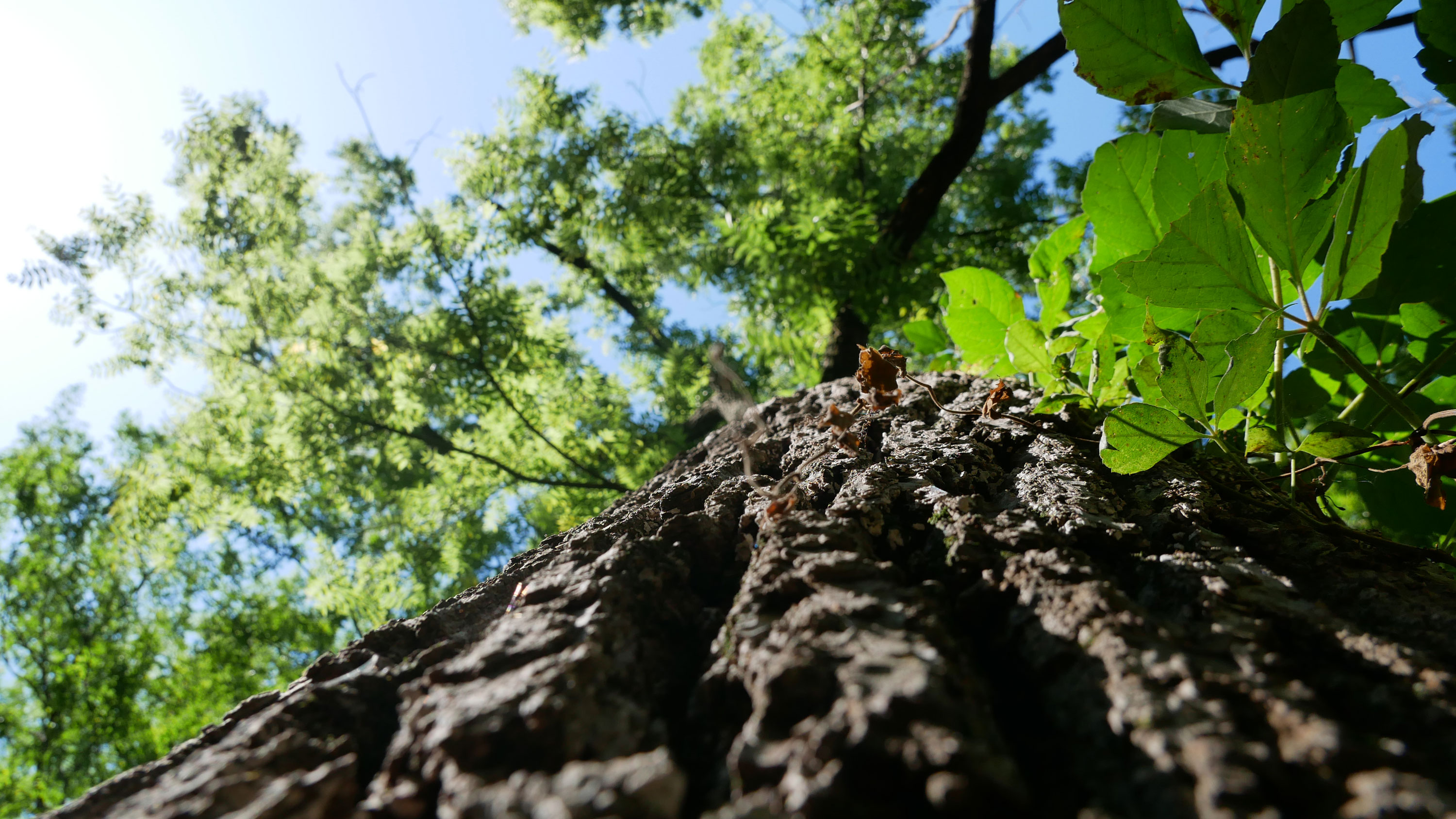
Tree City USA
Overland Park is proud to be a Tree City USA since 1978.
The Arbor Day Foundation recognizes cities across the country that meet standards of sound urban forestry management with Tree City USA designation.
Learn more about OP’s Tree City USA designation on the Arbor Day Foundation website.
State Champion Trees in Overland Park
A Champion Tree is the largest tree of its species. The Kansas Forest Service designates champion trees by a point system calculated using the tree’s circumference, height and crown spread. Identifying Champion Trees honors large, resilient trees, increases awareness of a variety of tree species and promotes preservation for both historical and scientific interests.
Four Kansas State Champion Trees grow in Overland Park.
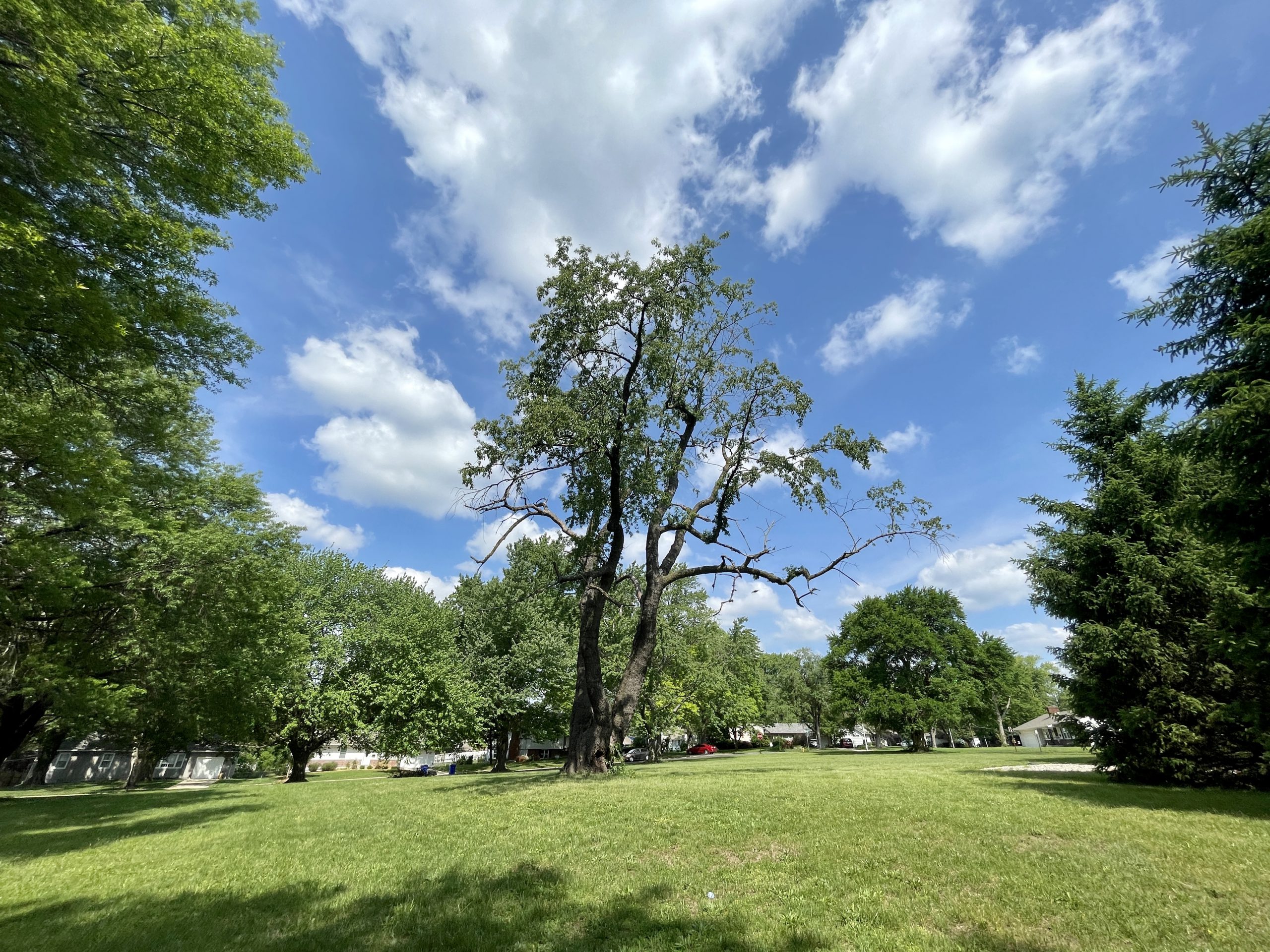
Black Cherry
Location: Church of the Holy Cross, 8311 93rd St.
Height: 62’
Circumference: 3’
Crown Spread: 62’
Scientific Name: Prunus serotina
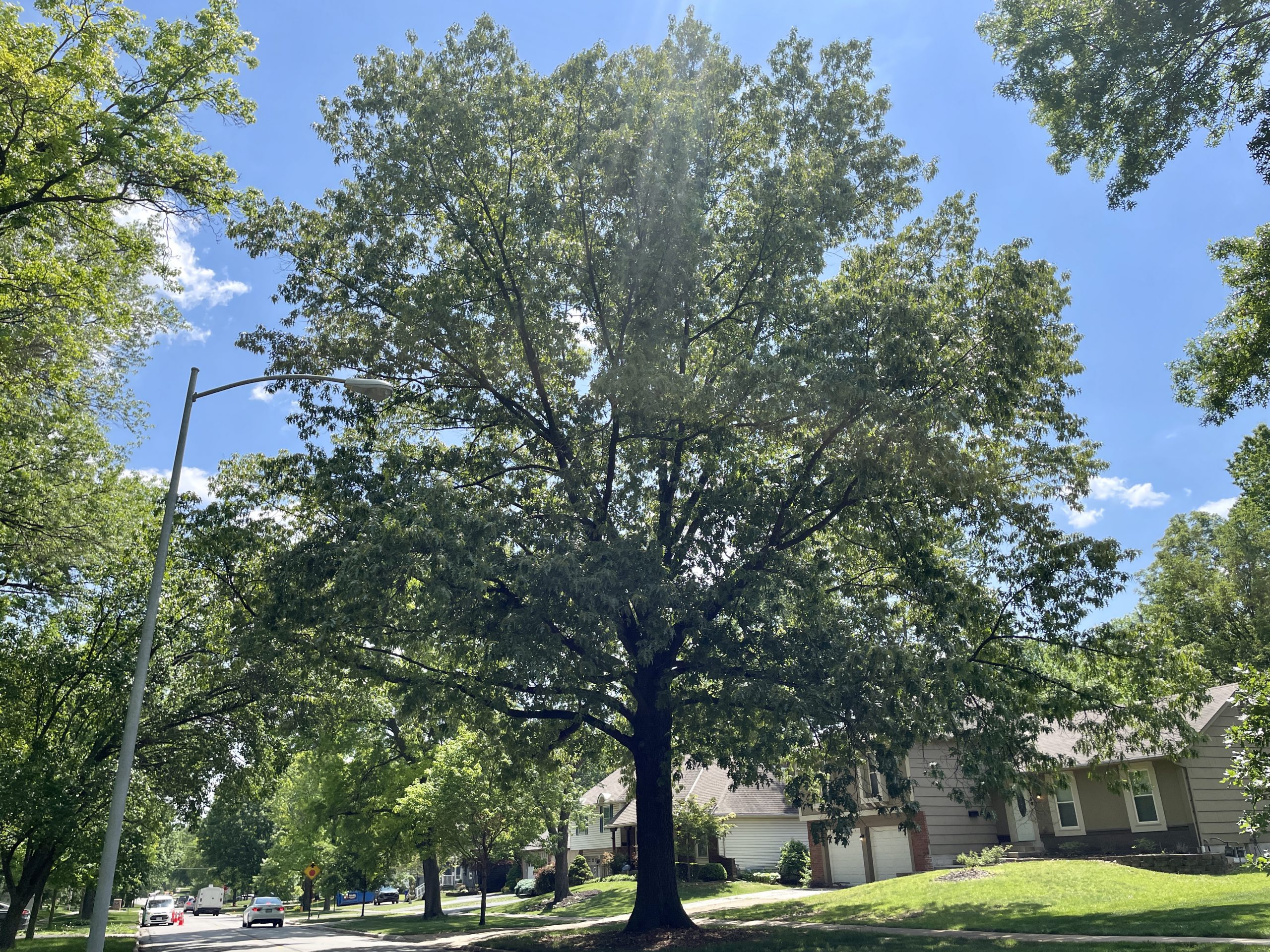
Cherrybark Oak
Location: 9740 Roe Ave.
Height: 83’
Circumference: 8’11”
Crown Spread: 71’
Scientific Name: Quercus pagoda
*This Champion Tree is a street tree. Please adhere to parking signs in the area.
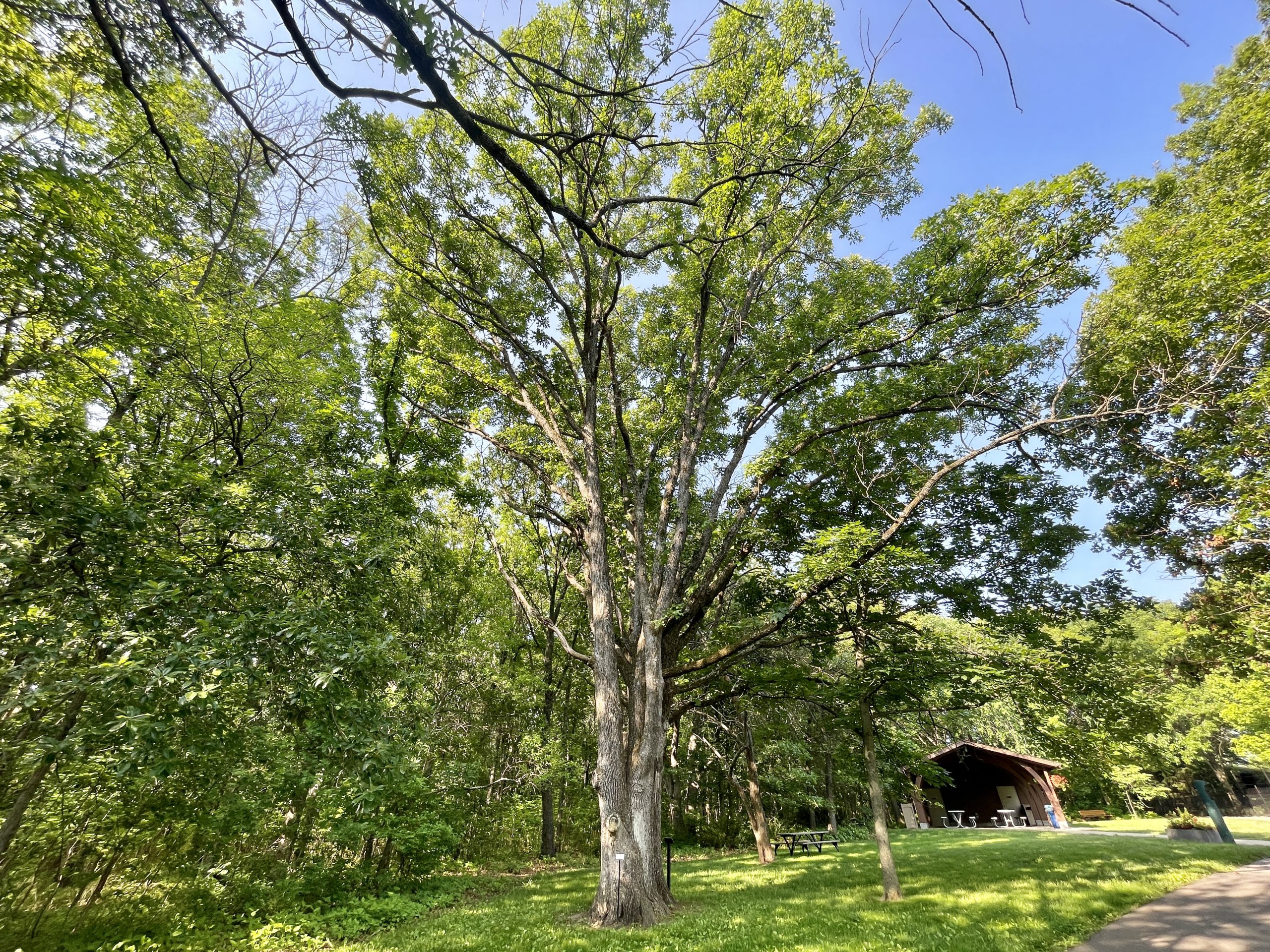
Post Oak
Location: Overland Park Arboretum & Botanical Gardens, 8908 W 179th St.
Height: 60’
Circumference: 2’
Crown Spread: 62’
Scientific Name: Quercus stellata
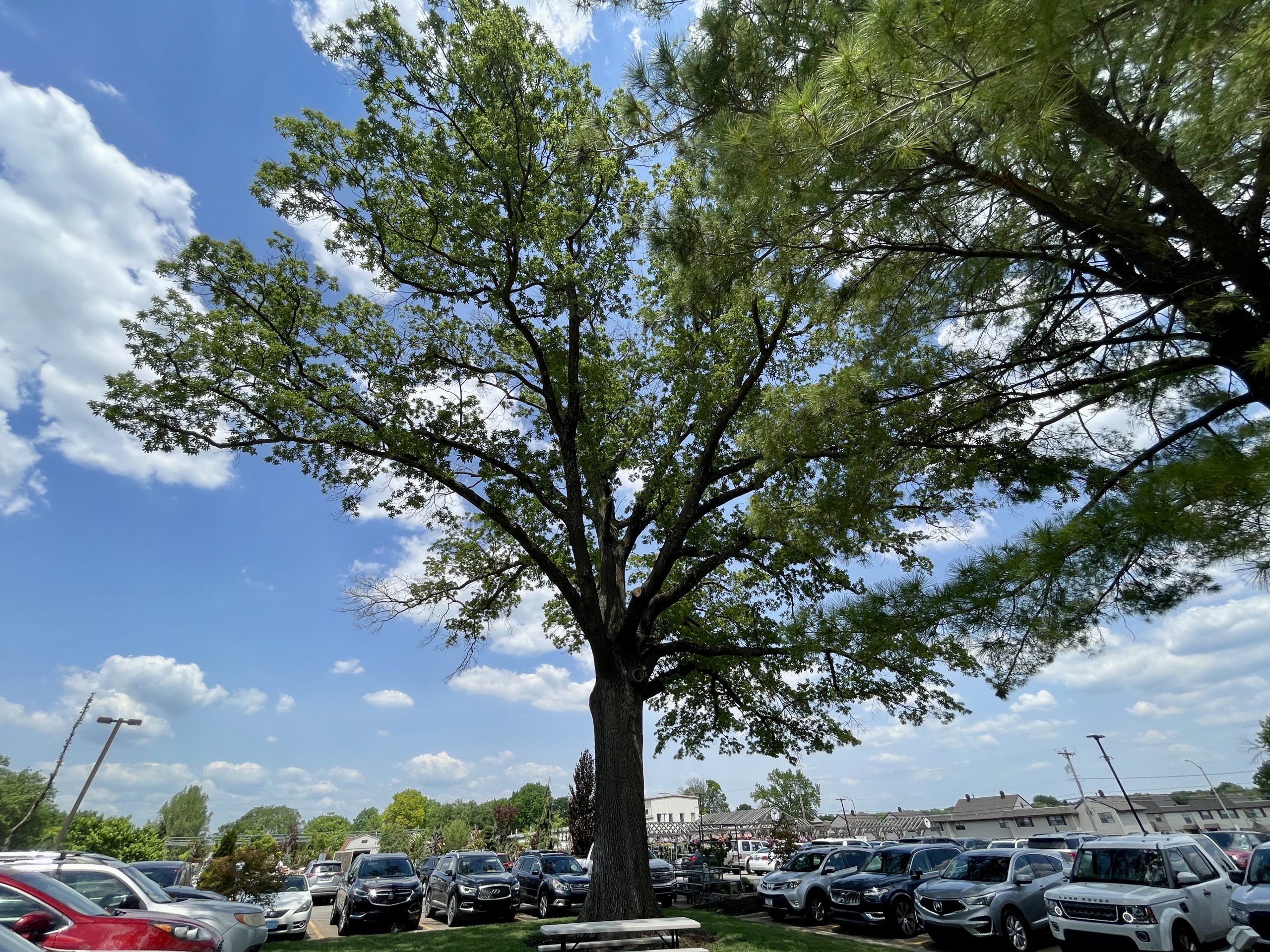
Shingle Oak
Location: Family Tree Nursery, 8424 Farley St.
Height: 80’
Circumference: 13’6”
Crown Spread: 90’
Scientific Name: Quercus imbricaria
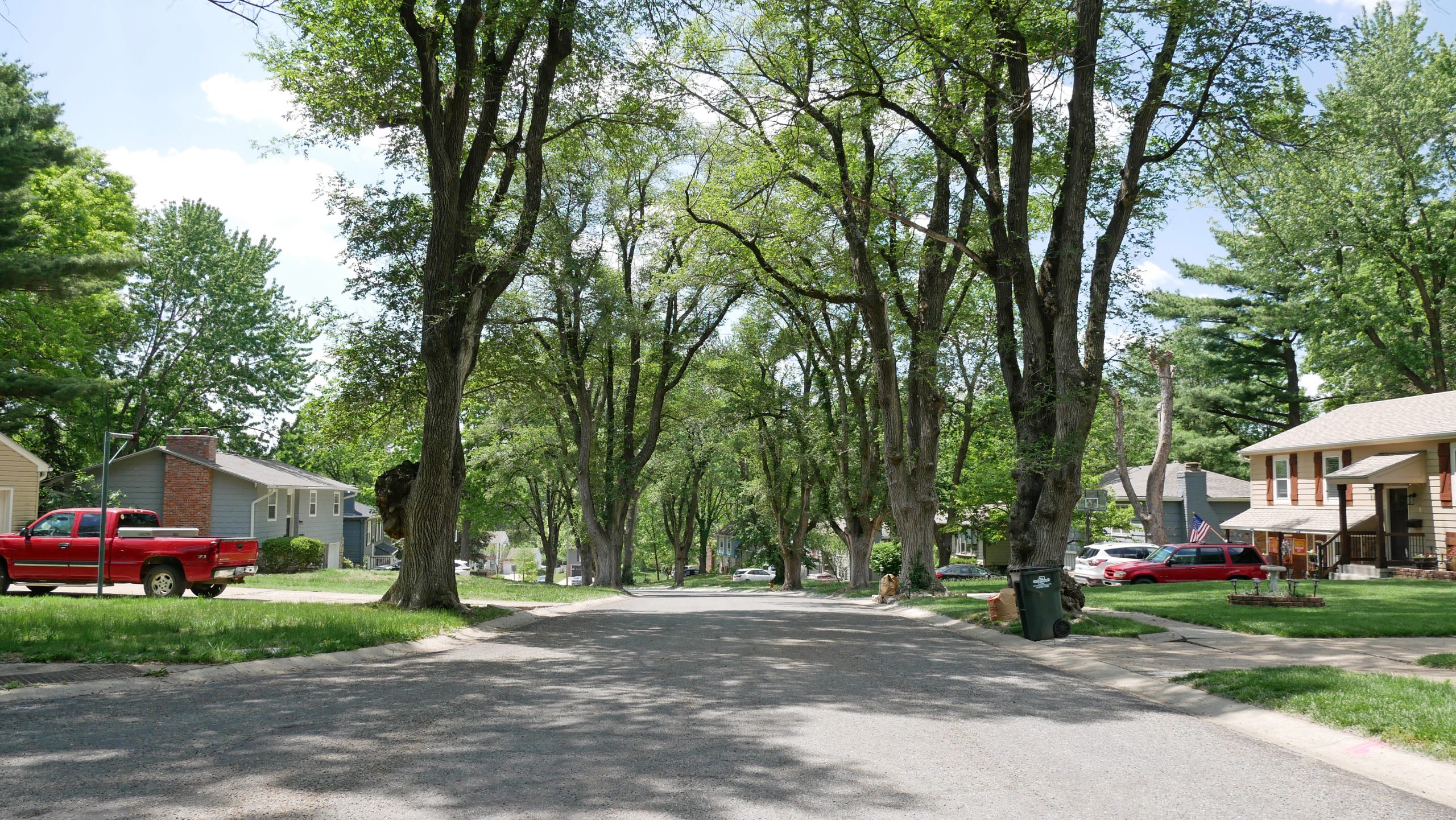
Street Trees
There are tens of thousands of street trees in Overland Park.
Learn more about how the city handles street tree maintenance, learn which ones are best to plant, and see a map of the street trees in your neighborhood.
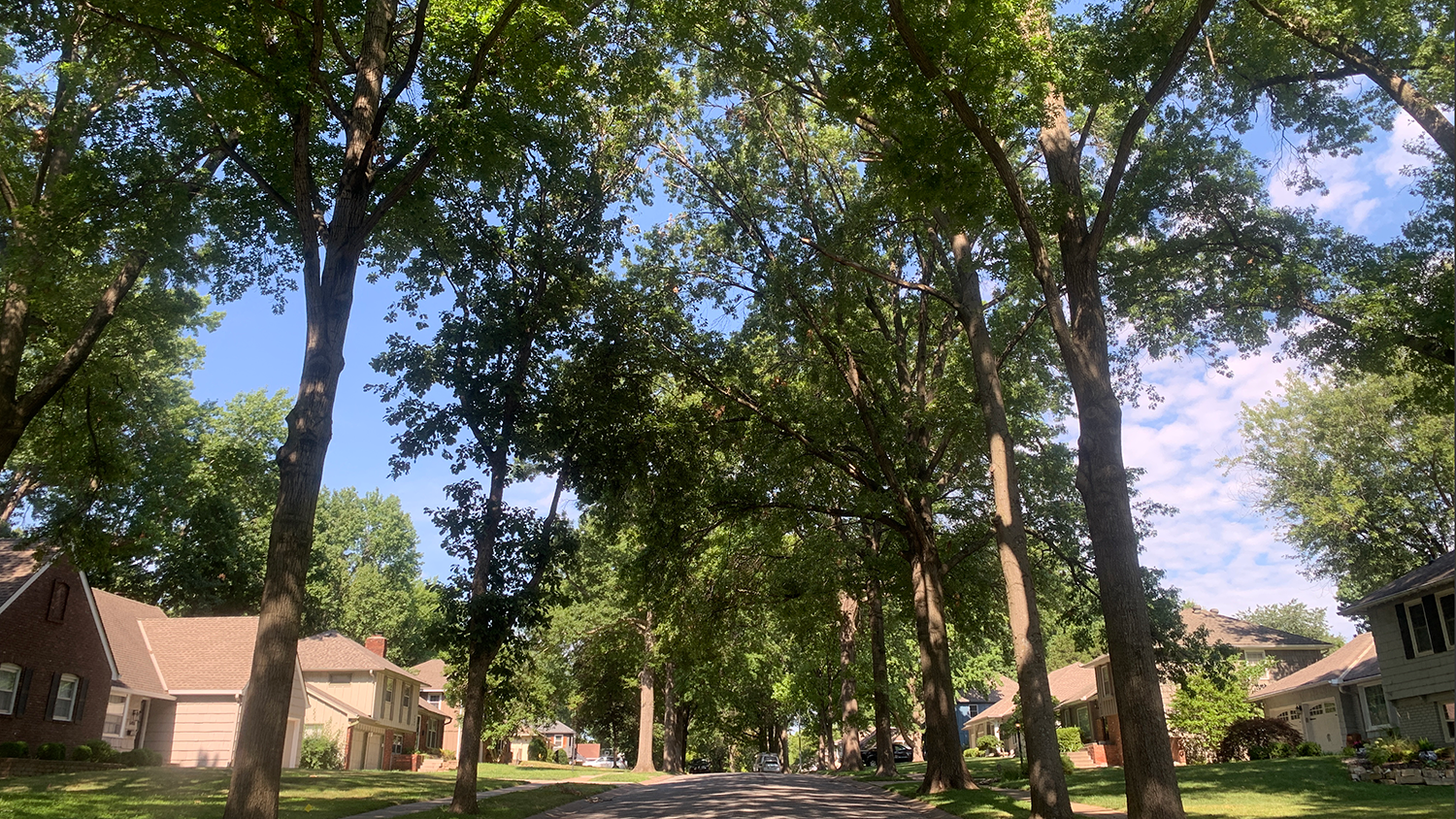
Canopy Streets Award
Congratulations to residents of 101st Terrace, from Lamar Avenue to Glenwood Street, for receiving the 2024 Canopy Street of Excellence Award.
101st Terrace was selected for its continuous, uniform spacing of trees with overarching branches that create a constant canopy over the street for at least one city block. These street trees offer a variety of benefits to the community, including beauty, health, social, environmental and economic advantages. Notably, they enhance property values, improve air quality by capturing pollutants and provide a more pleasant walking environment, which fosters an inviting sense of community.
The Legacy of Greenery Committee named its first ever Canopy Street of Excellence in 2021. Check back for nomination forms for the 2025 award.
What is a Canopy Street?
Canopy streets have continuously-spaced trees near the street, with overarching limbs that are usually touching, creating a canopy.
Canopy trees have numerous benefits to the neighborhood and community. They frame the street, causing drivers to slow down; they promote a better walking environment; they are better for the environment, capturing pollution, providing habitats for animals and intercepting rainfall to decrease flooding concerns; they extend the life of the asphalt by reducing damage from sunlight; and they can increase property values.
Invasive Species
You can help protect Overland Park’s environment by being aware of invasive species entering our ecosystem and taking action when they arrive.
Emerald Ash Borer
Emerald ash borer larvae drill into the bark of ash trees, feeding on the vascular tissues inside the tree over the winter. In the spring, the beetles leave the tree, but the damage to the tissue cuts off the passage of nutrients and water from the tree’s roots to its canopy.
Nearly a quarter of Overland Park’s street trees are green or white ash trees, threatened because of the emerald ash borer. There are many more ash trees in city parks, along trails and waterways, and on private property.
Overland Park’s Action Plan
Since the infestation of the emerald ash borer, Overland Park does not plant ash trees. The city will not treat infested street trees, but encourages residents to monitor the conditions of their street trees.
Learn more about Overland Park’s upcoming ash tree removal plan.
Handling an Infestation
If you believe the emerald ash borer has infested a tree on your property,
- Have a certified arborist inspect the tree to determine if ash borers are present and whether the tree can be saved.
- Follow the Missouri Department of Conservation’s guide to managing an infestation.
- Consider replanting a tree from the city’s list of approved street trees if your tree cannot be saved.
Shrub Honeysuckle
Shrub honeysuckle is a non-native, proliferate plant that outcompetes native species by growing earlier in the year and losing its leaves later than other plants. The shrub honeysuckle’s berries do not feed migratory birds as well as native species, and the plant’s shallow root system creates erosion issues. It is difficult for native ecosystems to reestablish once this shrub has moved in.
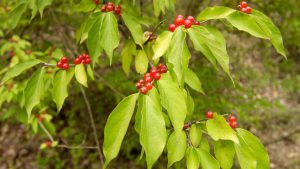
You can identify shrub honeysuckle easily in the fall. It has bright, green leaves and bright red berries when most other woodland trees and shrubs have already lost their leaves. It is often found along wooded stream banks and hillside woodlands.
Handling an Infestation
During the fall, cut shrub honeysuckle plants as low to the ground as possible. Treat the stump with herbicide to ensure it does not regrow.
Contact
Bailey Patterson
City Forester
913-327-6639
Laura Peterson
City Forester
913-327-6634
